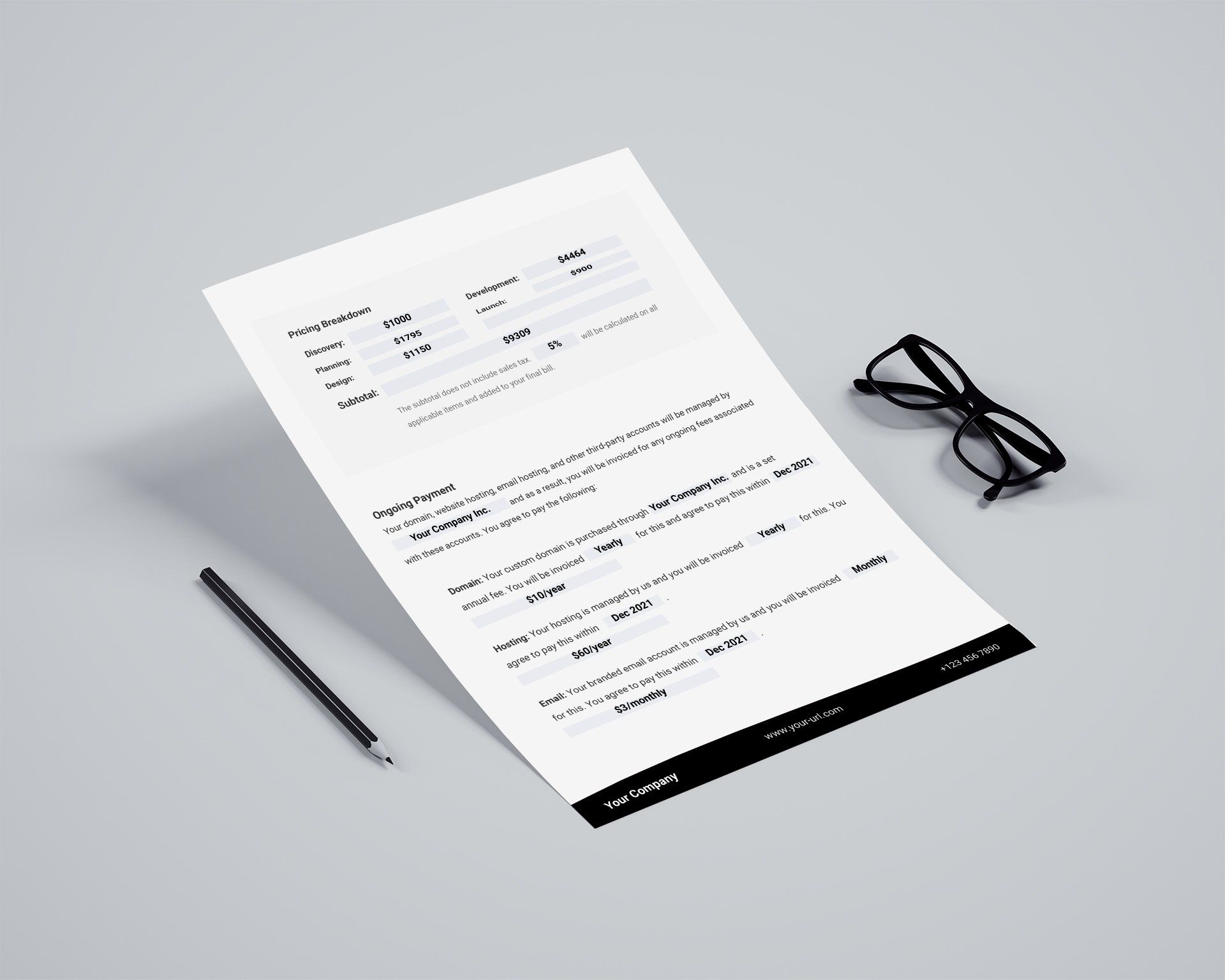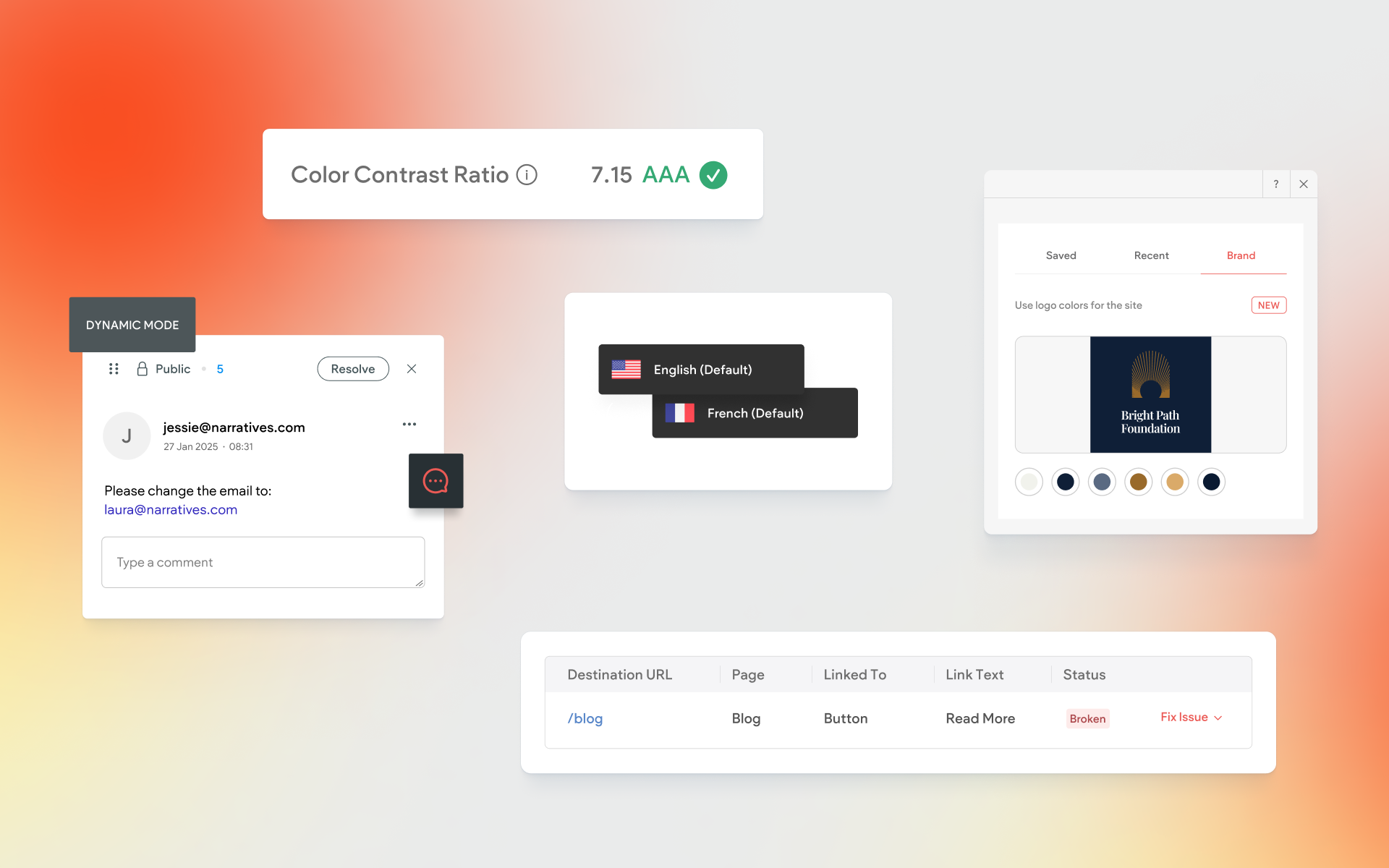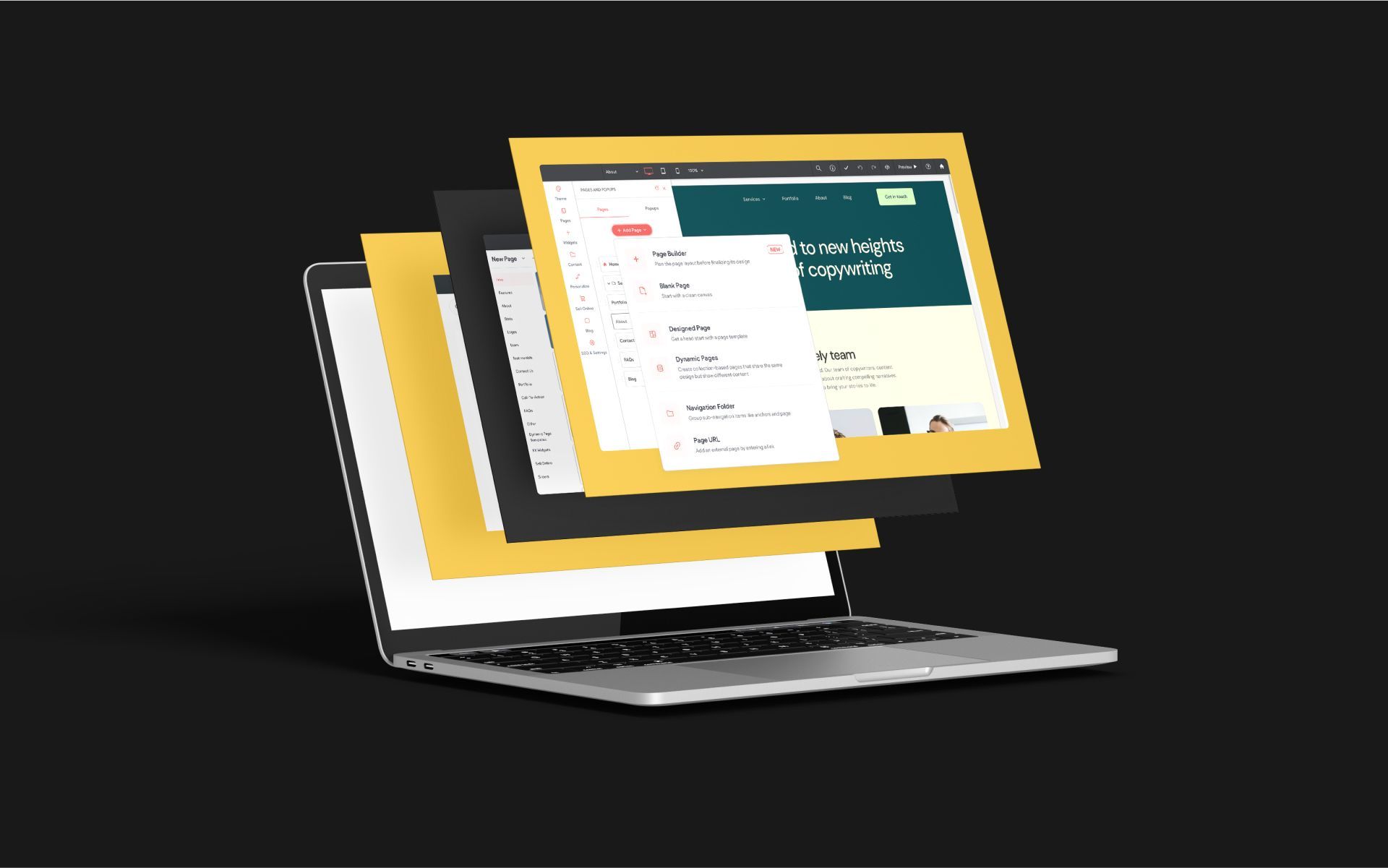Contracts – What Are They and Do I Really Need Them?

Contracts are a legal document that lay out the terms and conditions of your project and YES, you absolutely need one. This includes important details for the client to be aware of and it can also protect you in the event of a cancellation, refusal to pay, or debate about amount of money due.
A lot of people neglect to create contracts for various reasons – trust in their clients is one, but a sense of intimidation is another common one. These legal documents often include confusing legal jargon and obscure clauses that may not be applicable – it can be challenging to know what you should include for a web design project specifically.
But your contract doesn’t need to be complex or legally impressive. The goal of the contract is not to confuse and trap your client into an agreement; the goal Is to establish some operating principles before you invest hours into a project. Keeping the contract simple, comprehensive, and specific to web design is the best way to keep your client’s trust while making it clear what your expectations are and what your recourse is in the event of an unfortunate event (i.e., cancellation or lack of payment).
The act of creating a contract is also a great activity for defining policies and making decisions about how you want to handle specific issues that might crop up. Once you have this down in writing its pleasantly surprising how much more confident you can feel telling a client that, “Sure I can make those additional changes, but it will be at your cost, as defined in the contract.”
There are many fantastic contract templates available online, but they may address areas beyond the scope of a web design project. Hiring a lawyer is also an option and this may be beneficial if you’re dealing with high-cost/high-stakes projects, however, you can create a solid contract without this investment. Read on to find out what critical clauses should be included in your contract.
Download the Free Contract Template!
Before you dive into the details – be sure to grab our free Contract Template. This resource combines all of the details found in this article into a comprehensive contract template that you can start using today. Just enter pertinent details such as names and rates to make it your own!
Assets included in this resource:
- Word Doc – update prompts for terms to make it fit your business
- PDF – this template is fillable and ready for your company logo
- Canva – customize in Canva for enhanced design & sharing options
Tell us where you'd like us to send your Contract Template! Submitting this form will also add you to our mailing list, where you will stay up to date on product announcements, news and special offers.
Statement of Work
Begin with a very clear statement of the work you will be providing, including reference of the scope of work, which would be included in your proposal. Make it very cut and dry what is and isn’t included in this project to eliminate any miscommunication.
Terms of Payment
The total cost due may be subject to some change once the project is underway – scope might creep, new features may be requested, etc. – but a clear pricing breakdown for each area of the project will prevent any surprises for your client. As well, include your deposit expectations; will you require 50% prior to start of the project? And when will the final balance be due?
This is also a great opportunity to bring up third-party company costs that your client might not be aware of. For example, a clause on their monthly or annual hosting costs is essential to remind them that there is an ongoing cost.

Protection Against Customer Changes
You might have a great relationship with your client and know a handshake is good enough – and hopefully it is! But clear terms on what will occur in the event of project scope changes, errors on their end, and impromptu cancellation, will protect you from lost money.
Referring to the timeline included in your proposal, remind your clients that there are deliverables required from them: content, logos, images, and, of course, ongoing reviews. This clause will protect you from a major delay in project, which will cost you money as you may not be able to engage with other clients while waiting. Errors and changes on the part of your customer should also be referenced to protect you; remind your client that this responsibility to ensure accuracy lies solely with them.
Finally, a cancellation clause is essential. Define your cancellation policy as it works for you, but our suggestion is that you require payment for all work performed up to the date of cancellation, as well as any expenses. The proposal timeline and your own records of work are essential in the event of a cancellation.
Other Clauses
Additional clauses will address specific questions your client might have and generally protect you.
Ownership, Usage, and Confidentiality
These clauses are largely in place to protect your client and show them that you’re invested in their well-being as well. Within these terms, you outline both parties ongoing rights over the website and your commitment to protecting proprietary information the client shares. If you would like to retain the right to feature the website in your own portfolio, this is a great place to make your customer aware.
Act of God
If the great Amazon Web Services server issue of 2021 showed us anything, it’s that you must include a clause regarding Acts of God. This states that there may be incidences that, however unlikely, may occur and are completely outside of your control and remove your liability in these events.
Hosting Details
Although not a clause necessary for every type of web design project, this clause is essential for Without Code sites. This gives some background on Amazon Web Services and explains that websites can’t be transferred outside of the platform. This will protect you if a client demands their website be exported to be used on another hosting platform.
Legacy Plan
This is an area so often neglected by contacts for all industries. You need to consider a legacy plan if you, as the web designer/manager of the site, are unreachable. Whether this be health related or simply an emergency, establishing a second contact who can help you access your website will eliminate a lot of fear. This clause also establishes legal permission for Without Code to transfer the website to the client if you are unable to communicate with us.
Although this clause is only needed in extremely unlikely scenarios, having this in place will give your client peace of mind and establish even more trust when they see that you’ve considered everything.
Signatures
This is a contract, a legal document, and not a proposal. As a result, signatures are required to make this legally binding. Pre-fill your contracts with your signature to make this process simple for clients and for you.
Although a very important document, contracts don't need to be intimidating. Our free contract template can help you get started on your own contract. Fill in your details, tweak the text for your own business and start sharing this with clients – both you and your clients will feel comforted knowing there are some policies in place.




